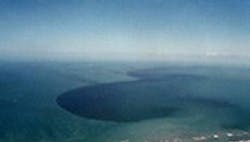Toxic Algae off the Coast of Washington
15 miles off the northwest coast of Washington, toxic blooms of algae are gathering in the largest and most lethal growth yet found by local scientists studying the Juan de Fuca eddy. The bloom stretches 30 miles across and is being monitored by satellite to detect any movement toward the coast.
"There's an obvious question that people would worry about: Is this going to hit the coast? Within the next week, if there's a major storm, it's possible it might hit the beach," said Barbara Hickey, a University of Washington oceanographer. "But we've added additional monitoring on the north Washington coast."
Nice weather over the next couple of weeks could decrease the bloom as well as keep it off the coast, she said.
Hickey emphasized that the state tests coastal waters twice a week for the presence of domoic acid, a toxin produced by algae called Pseudo-nitzschia. In lower doses, the poison causes damage in the area of the brain responsible for learning and memory. At higher doses, it's deadly.
The toxin builds up in shellfish, particularly razor clams, tainting them for a year or more.
The concentration of the poisonous algae in the eddy is as high as 11 million cells per liter, compared with about 200,000 cells per liter last year, the scientists found.
When examined in the past, the bloom was only a couple of miles wide. This year's unseasonably fall weather as been sited as the probable cause for the considerable growth of this year's bloom. The irregular rain could have altered the life cycle of Pseudo-nitzschia, of which there are about eight species, not all of them toxic, she said.
Scientists believe the algae is fed by nutrients from deep in the ocean or circulating from the strait, conditions that led to the bloom in the eddy south of Vancouver Island and west of the tip of the Olympic Peninsula.
"Basically, it's sort of a crock pot, stewing and retaining the cells and the toxins," said Vera Trainer, a research oceanographer with the Northwest Fisheries Science Center.
Even if the bloom moves southward, Hickey and Trainer believe the Columbia River plume -- a stream of light water flowing along the southern Washington coast -- will act as a barrier under certain conditions.
In any case, Trainer said, "We'll have enough early warning to know for sure that the (shellfish) resource is safe to dig."
Blooms of colorful and harmful algae, so-called "red tides," have periodically appeared off the coast for centuries. Scientists are unclear why poisoning from domoic acid was not a serious problem until the late 1980s. They say that the number and intensity of harmful blooms have risen in recent years.
Source: Seattle Post
